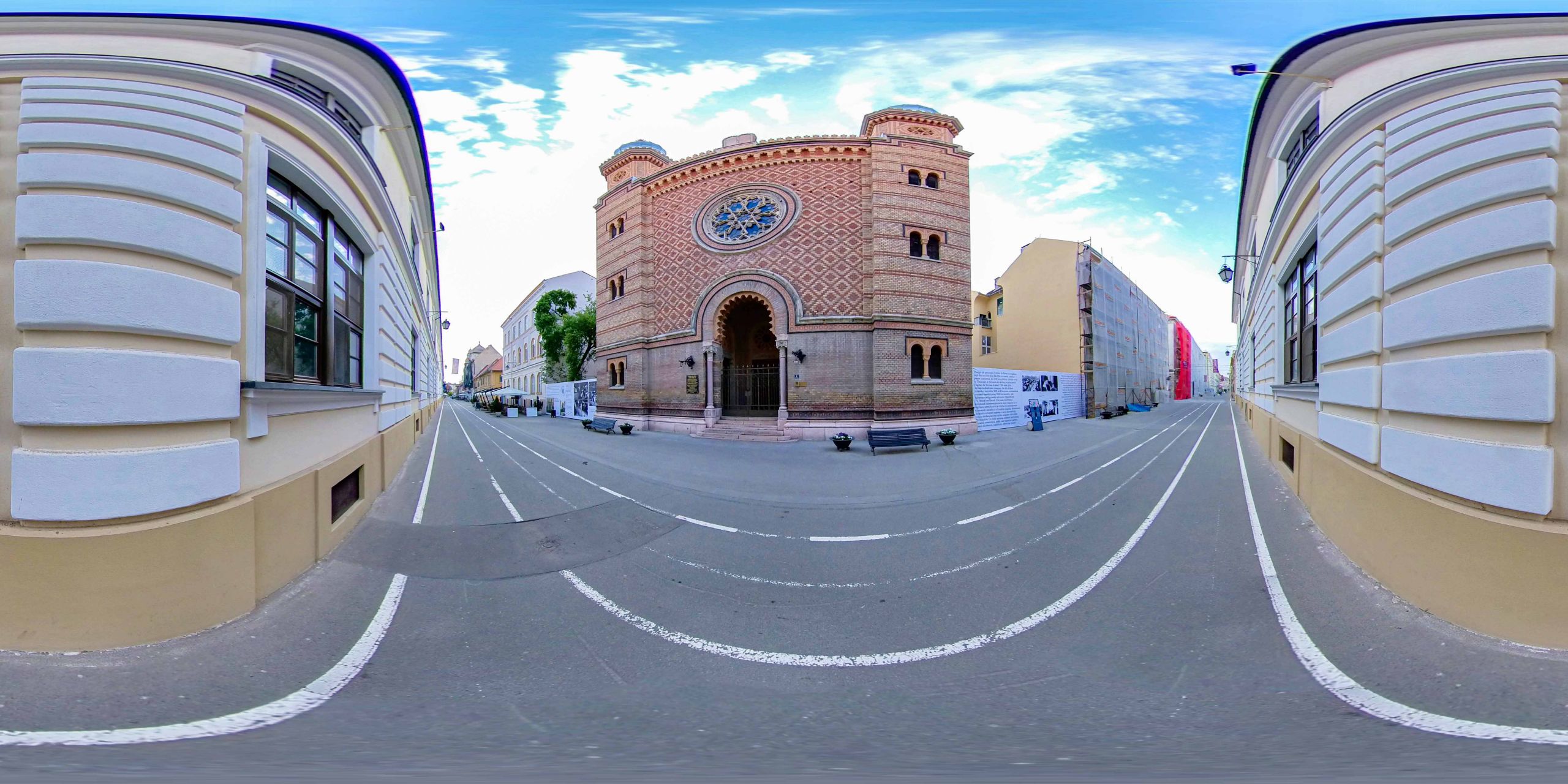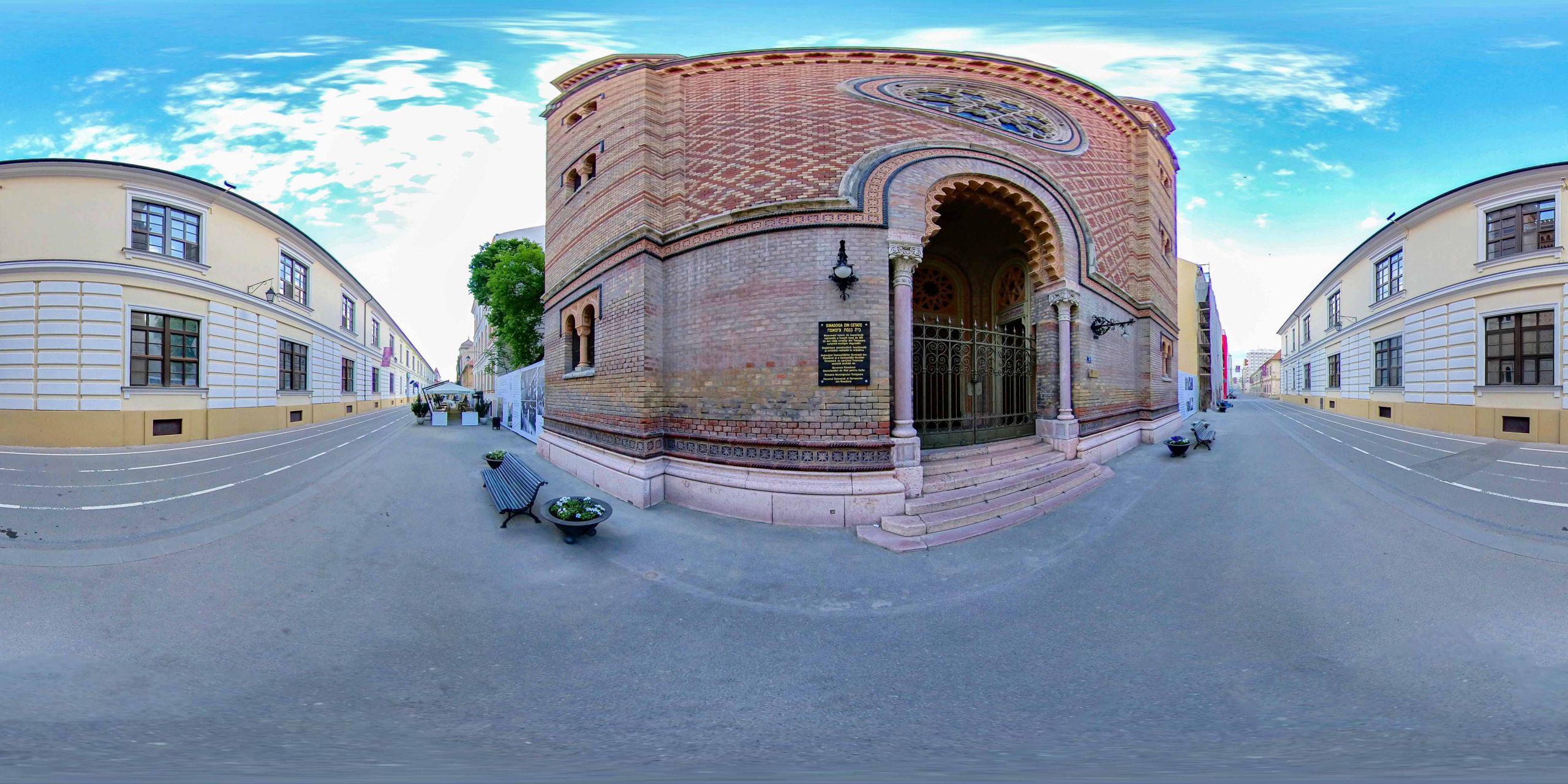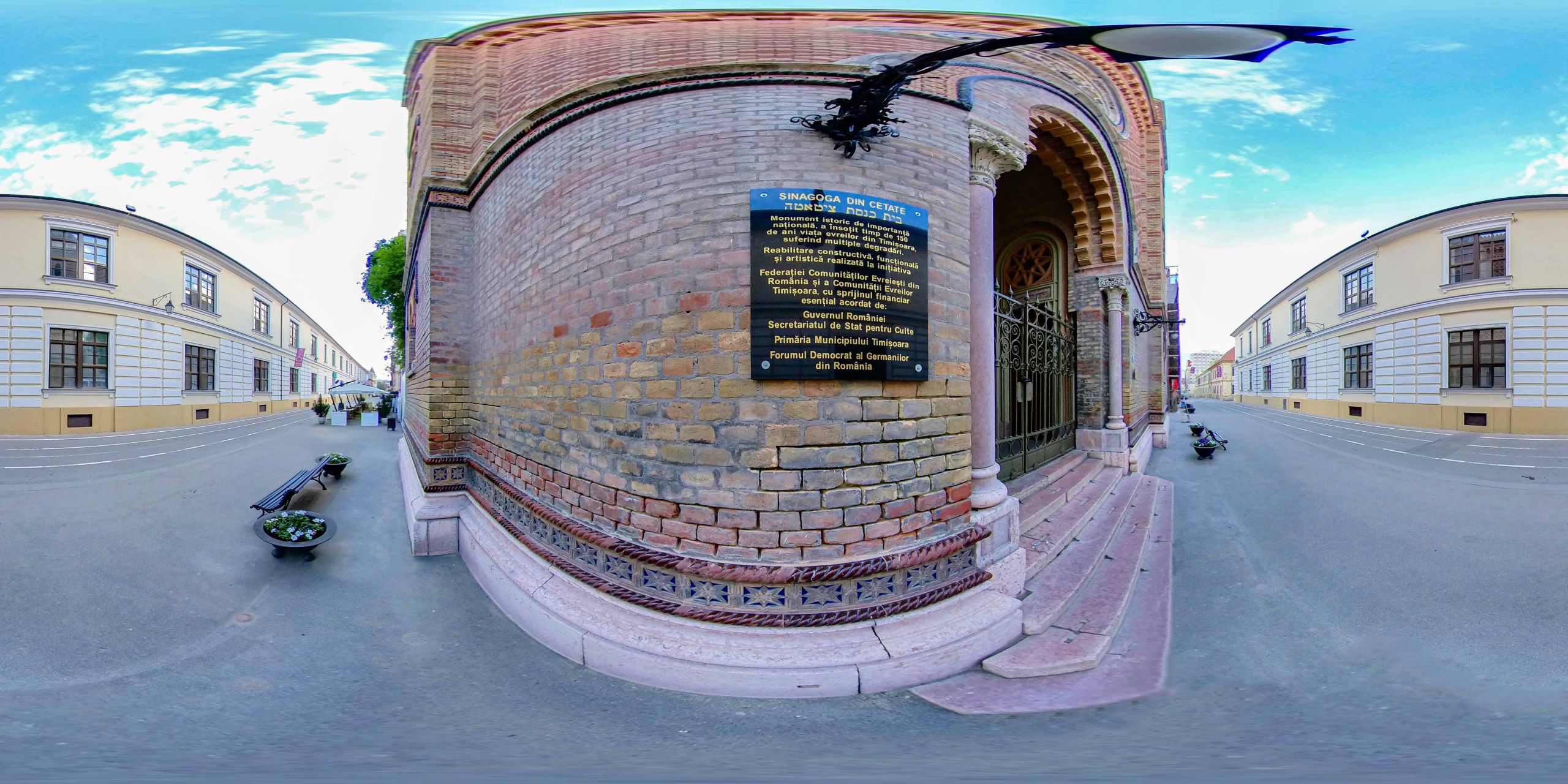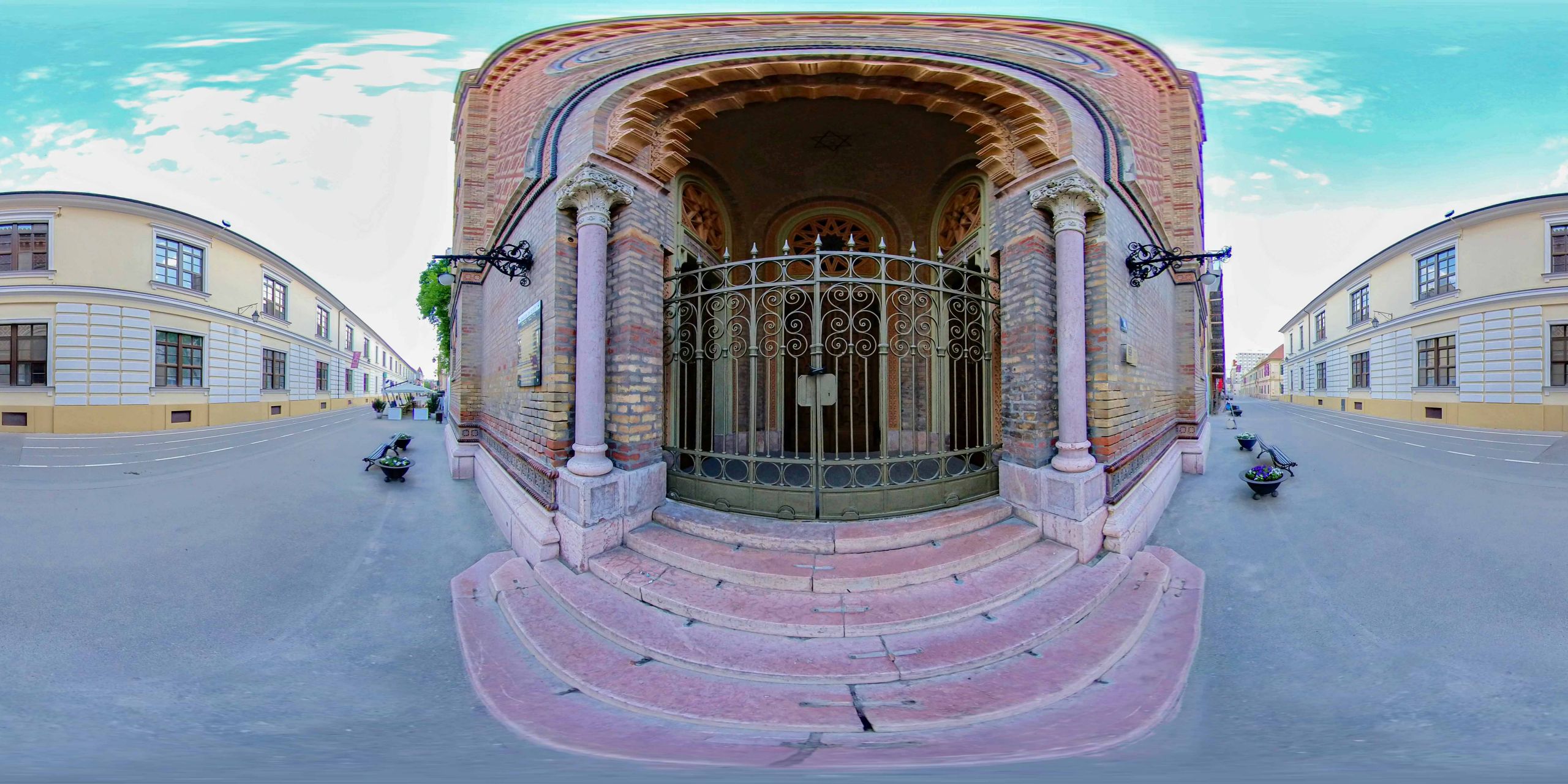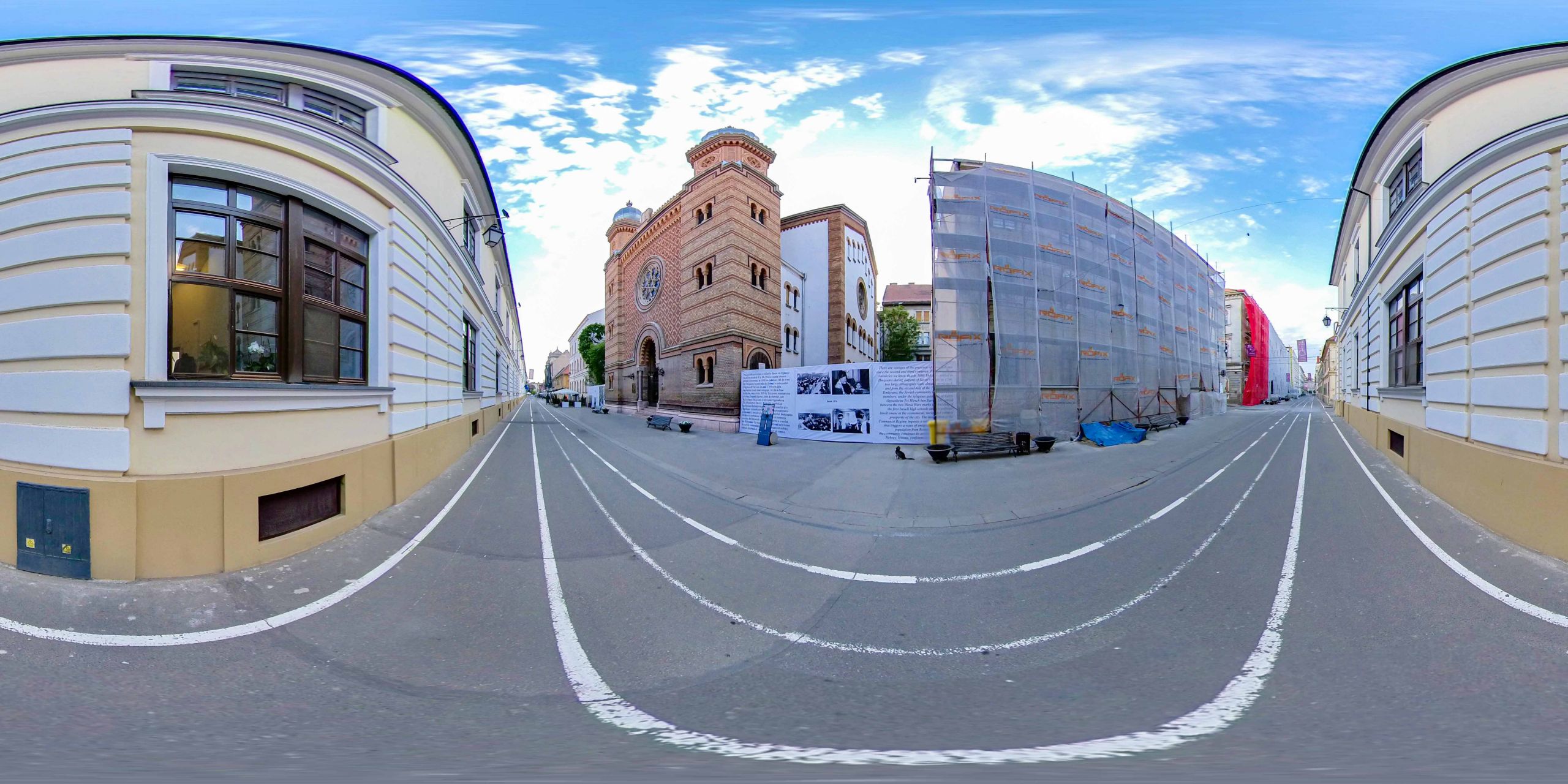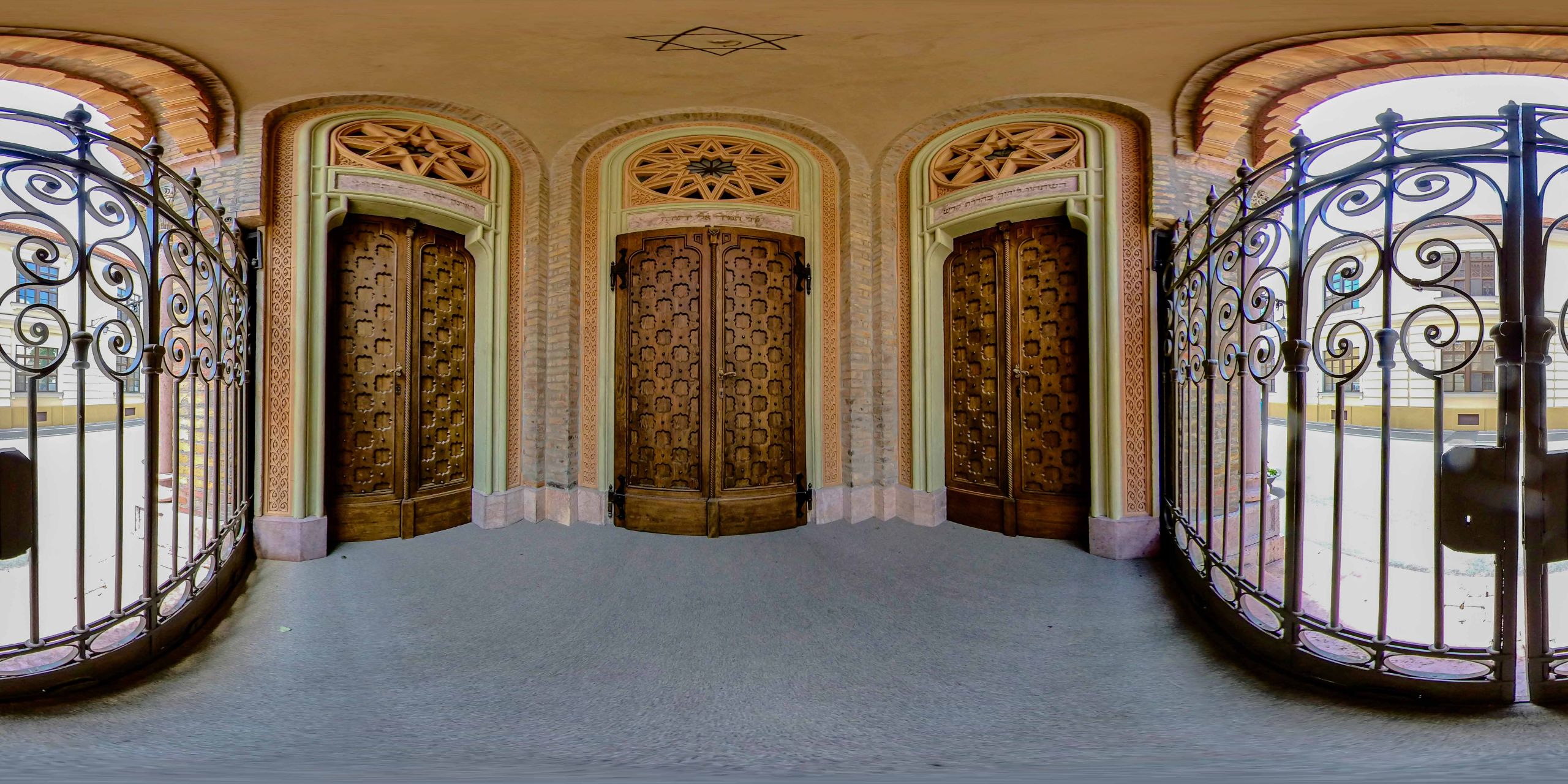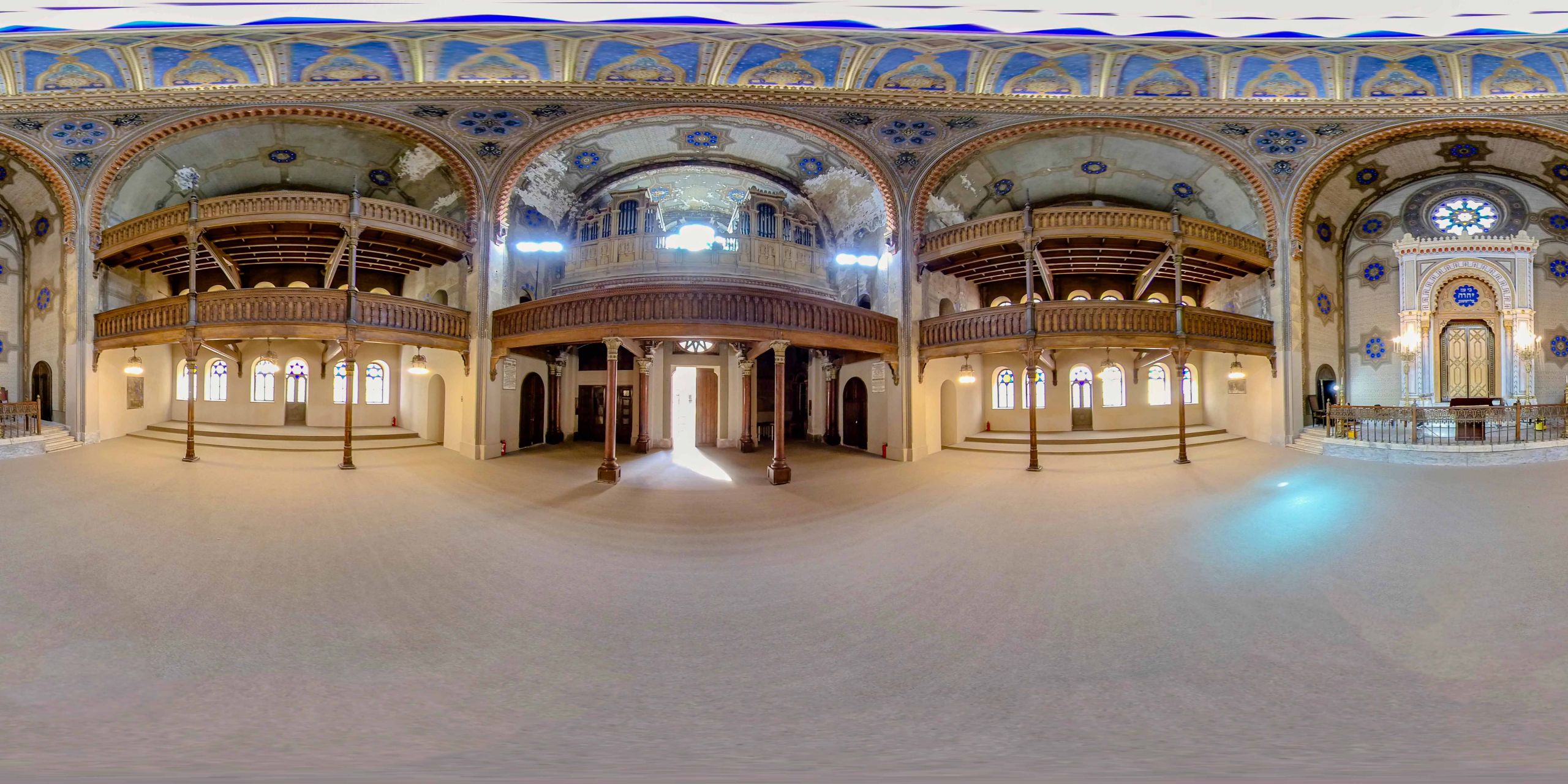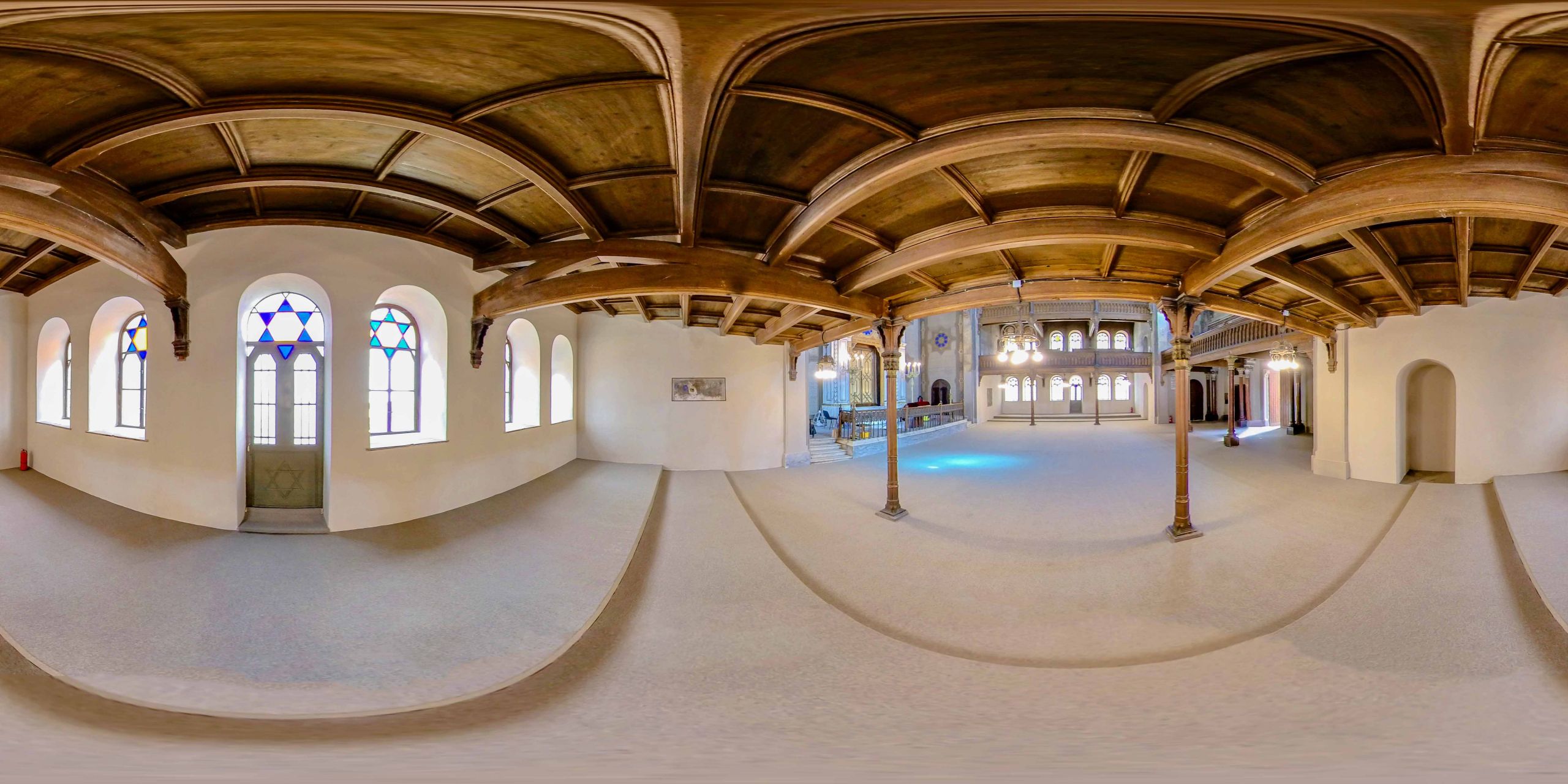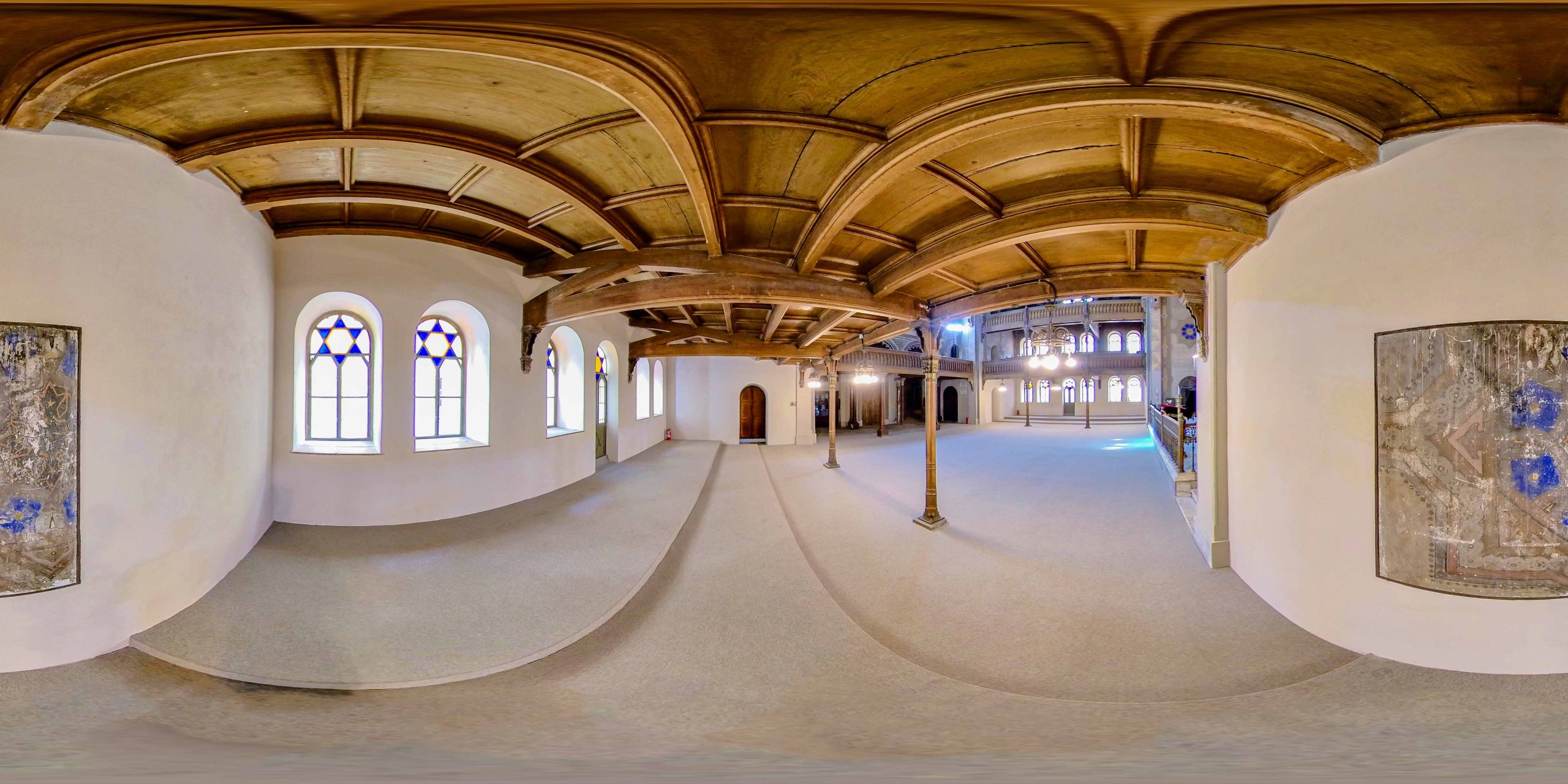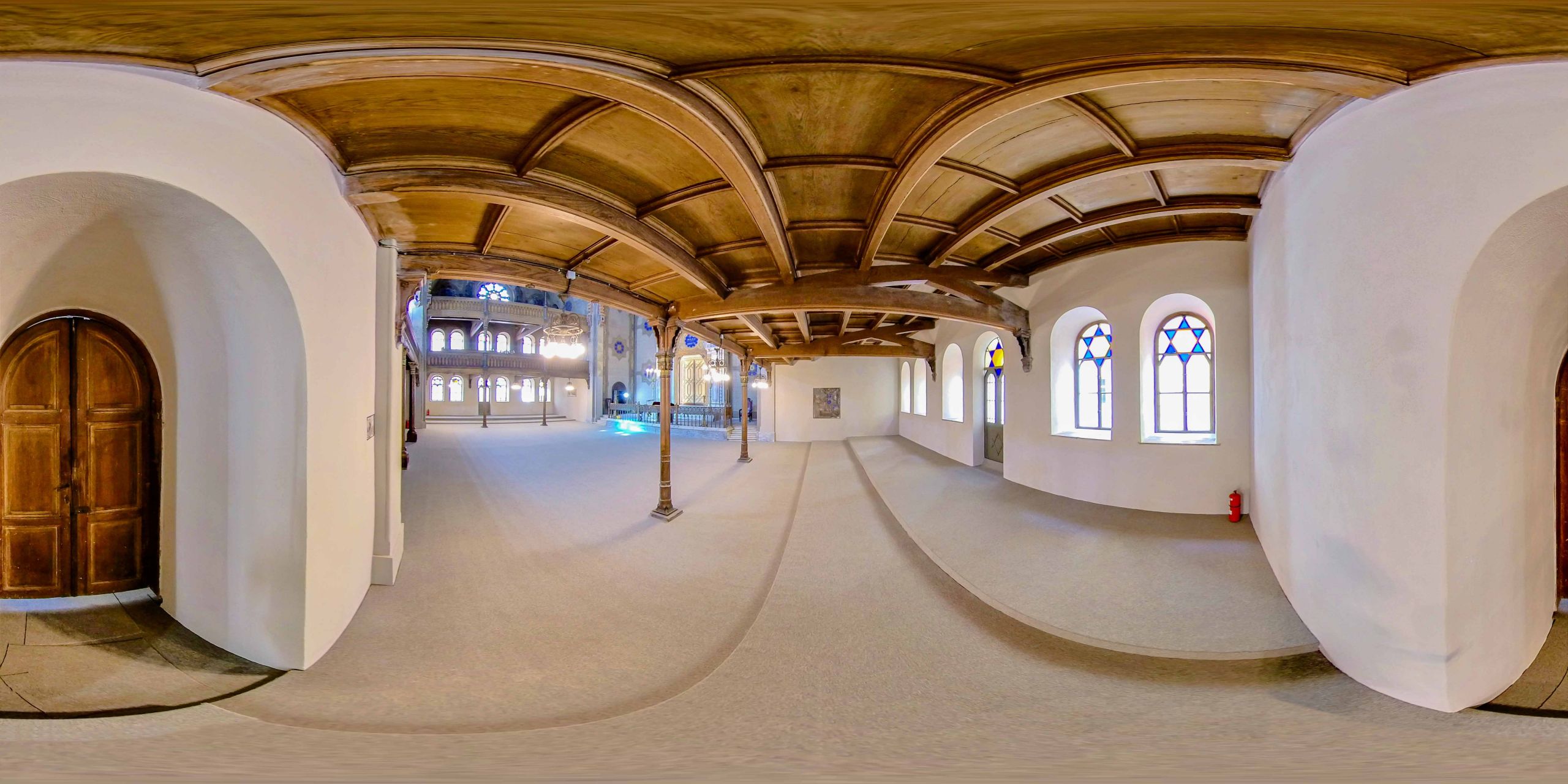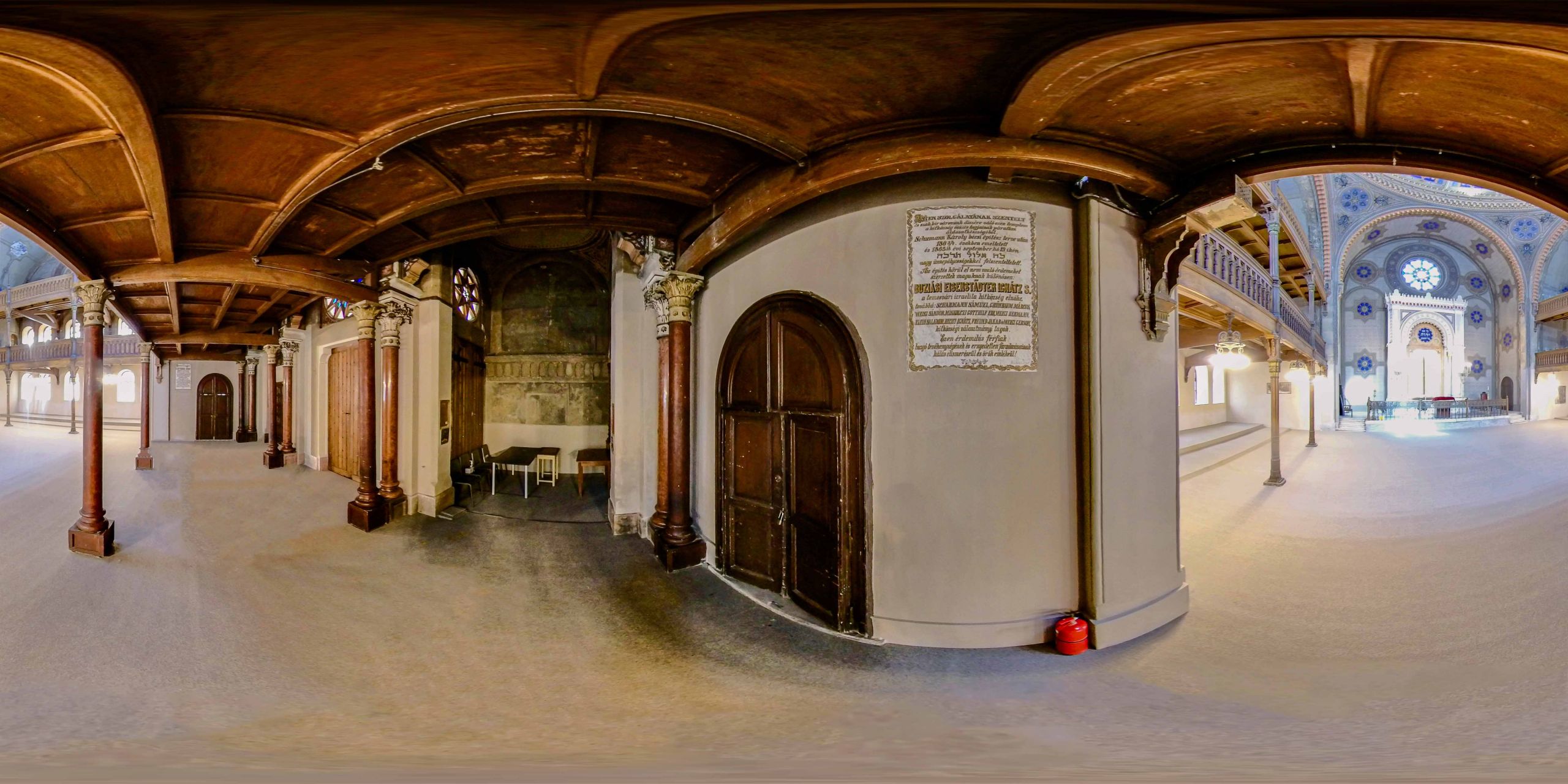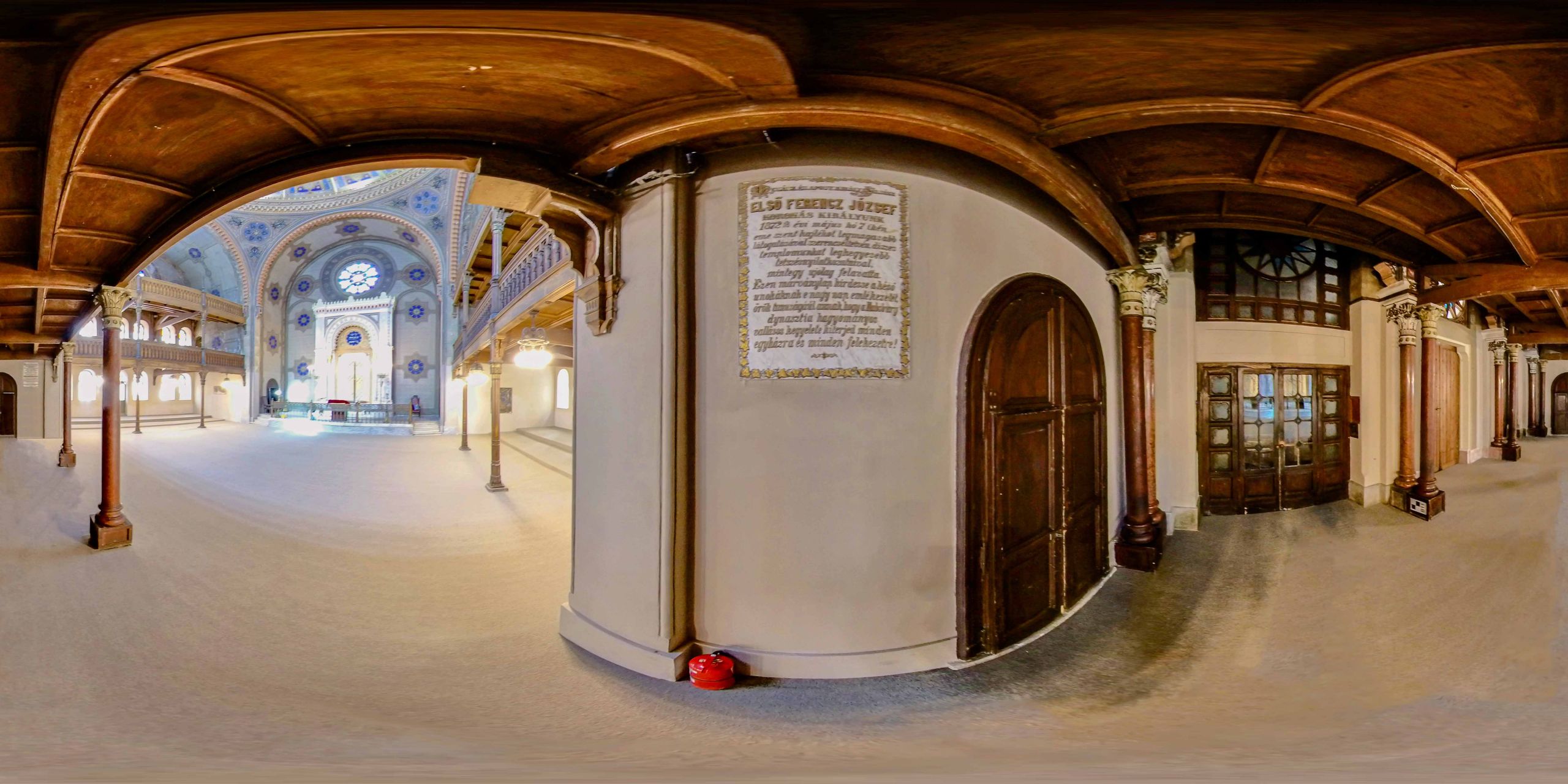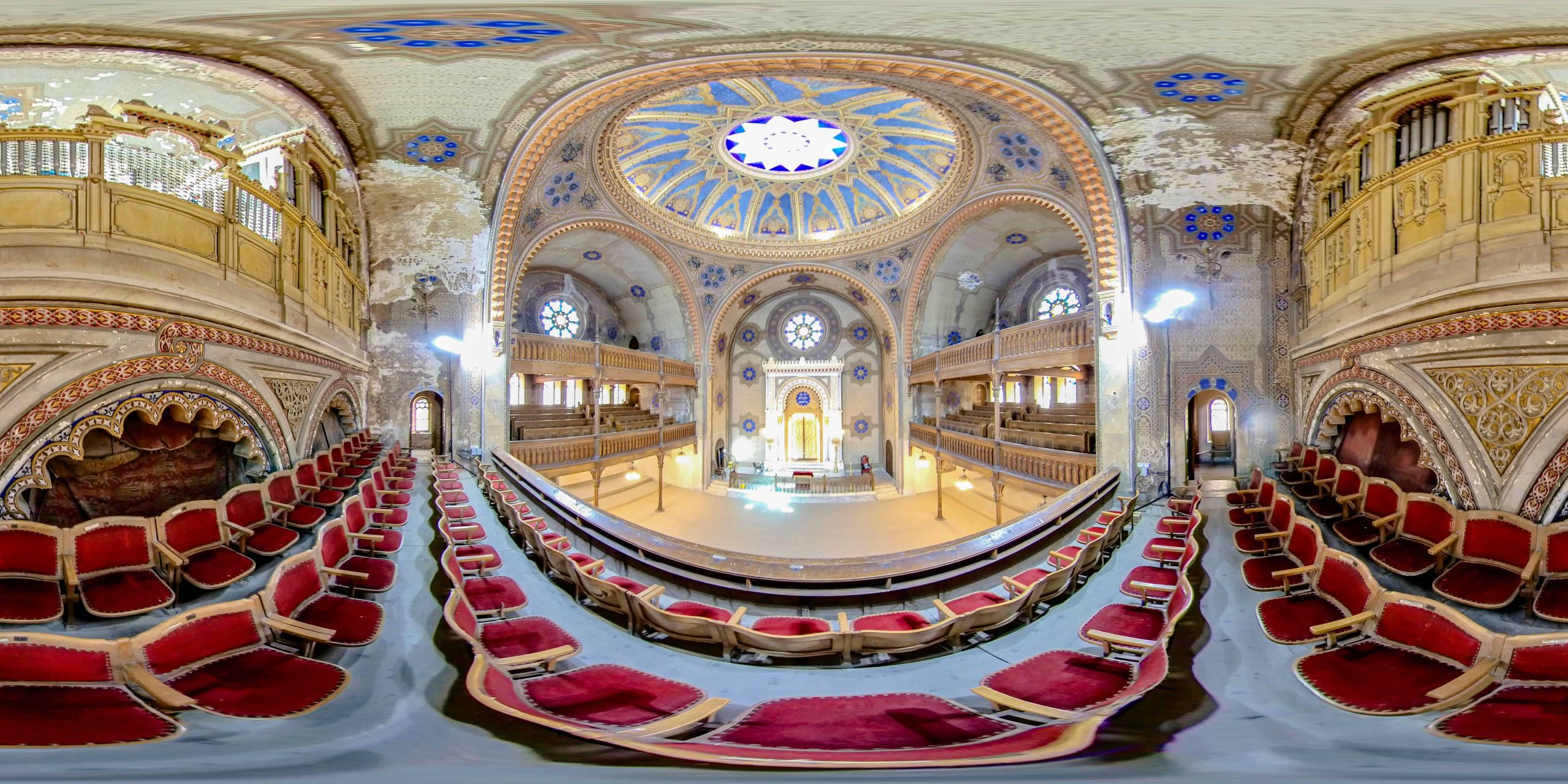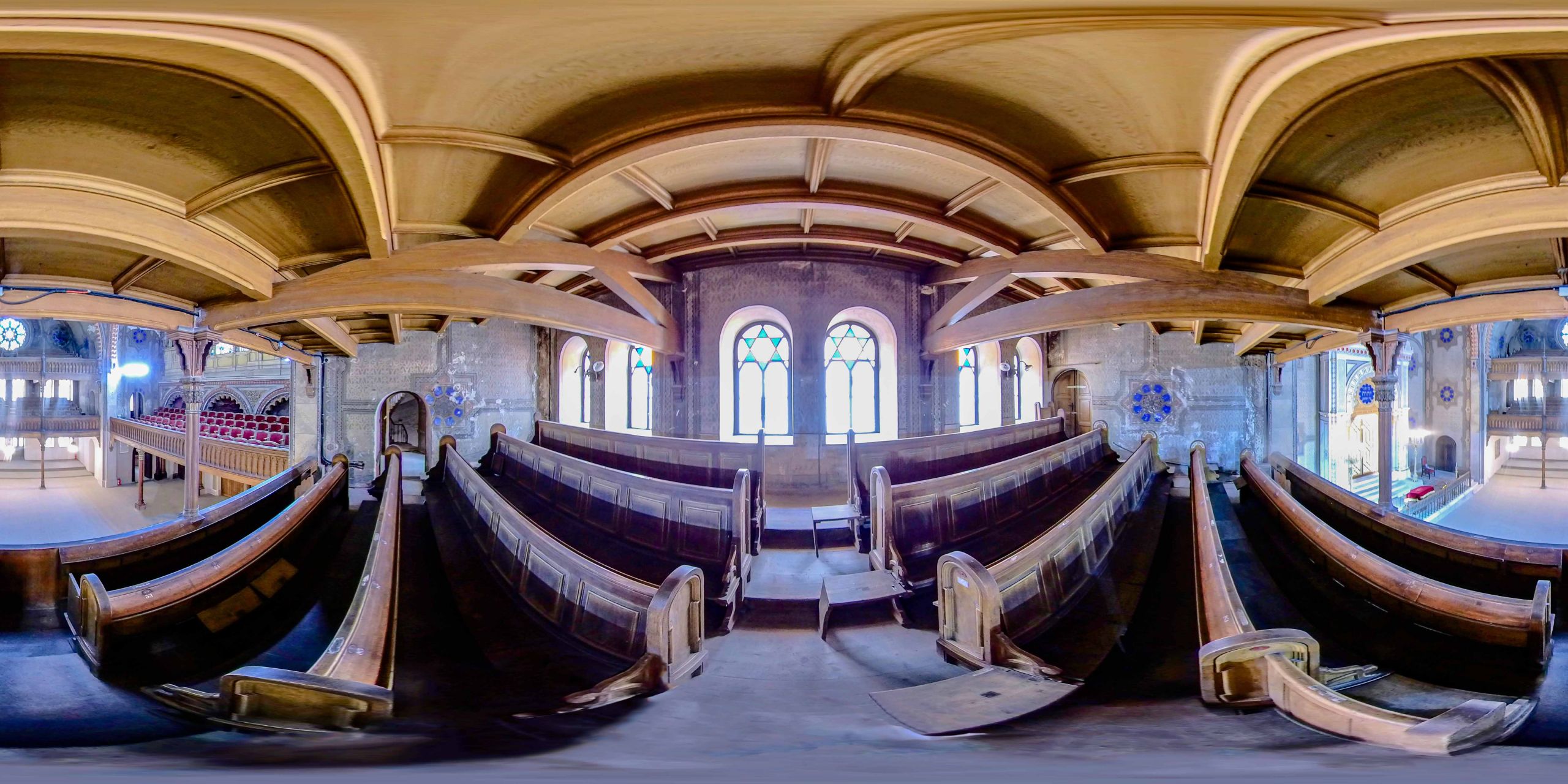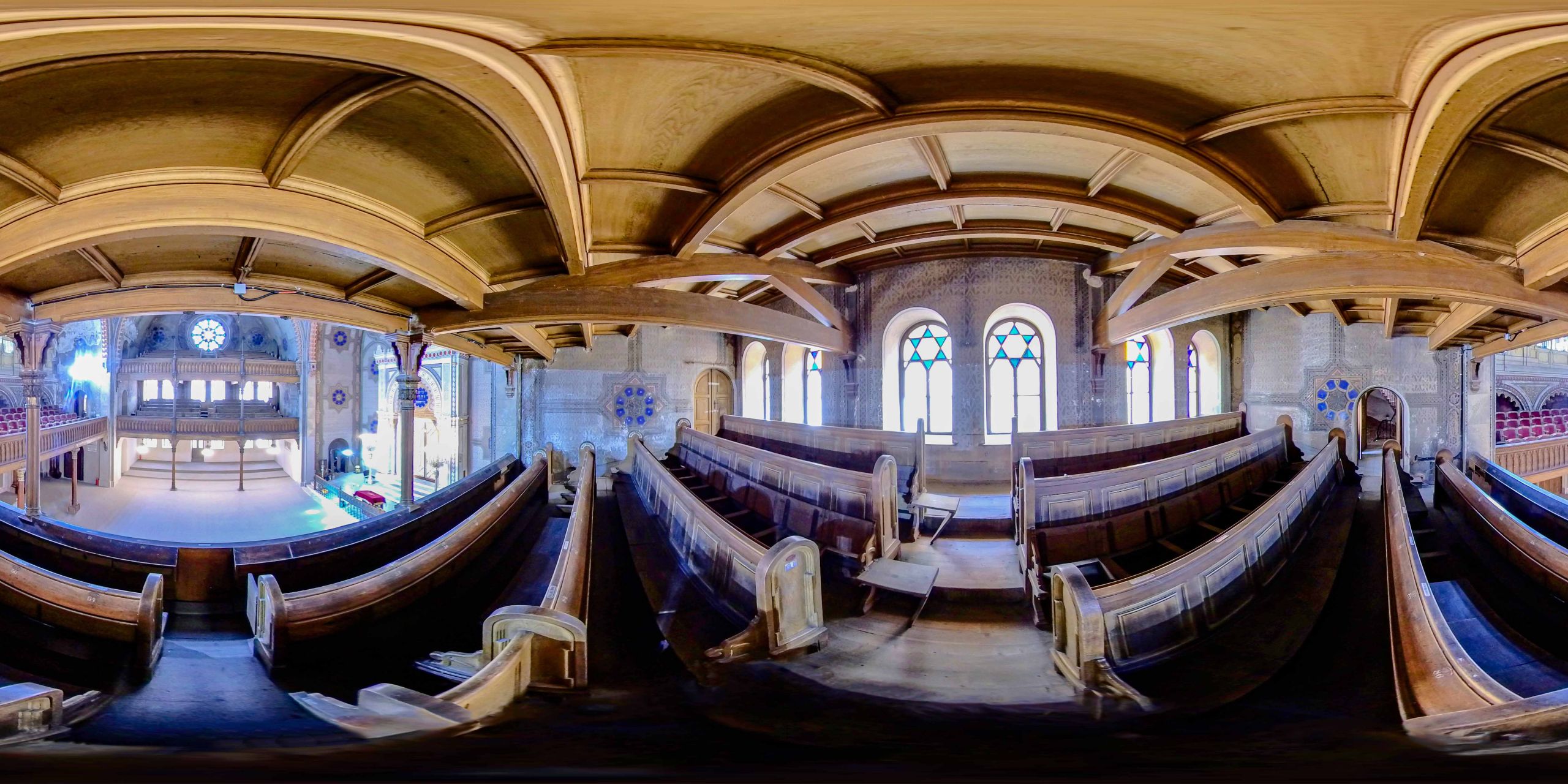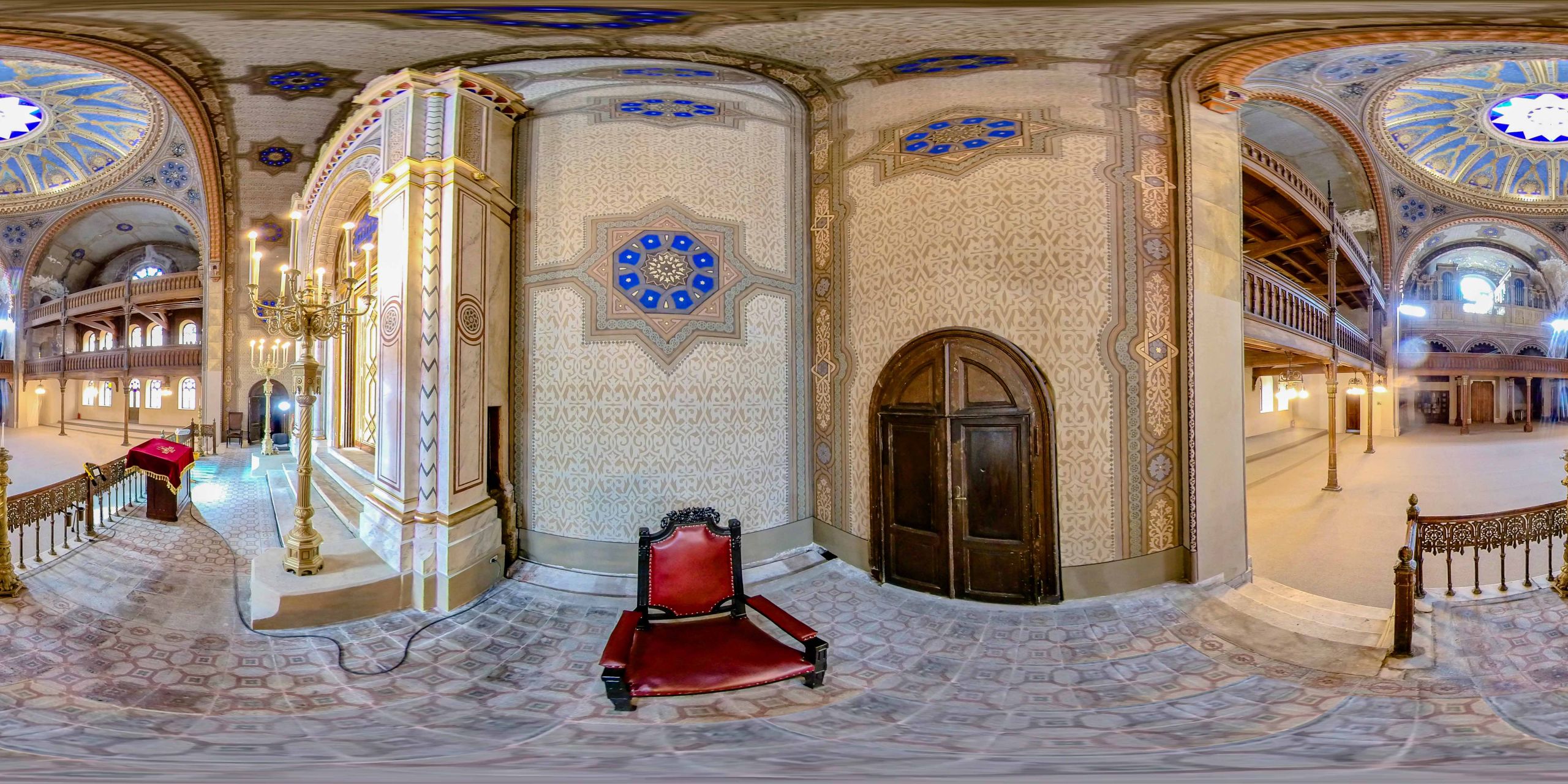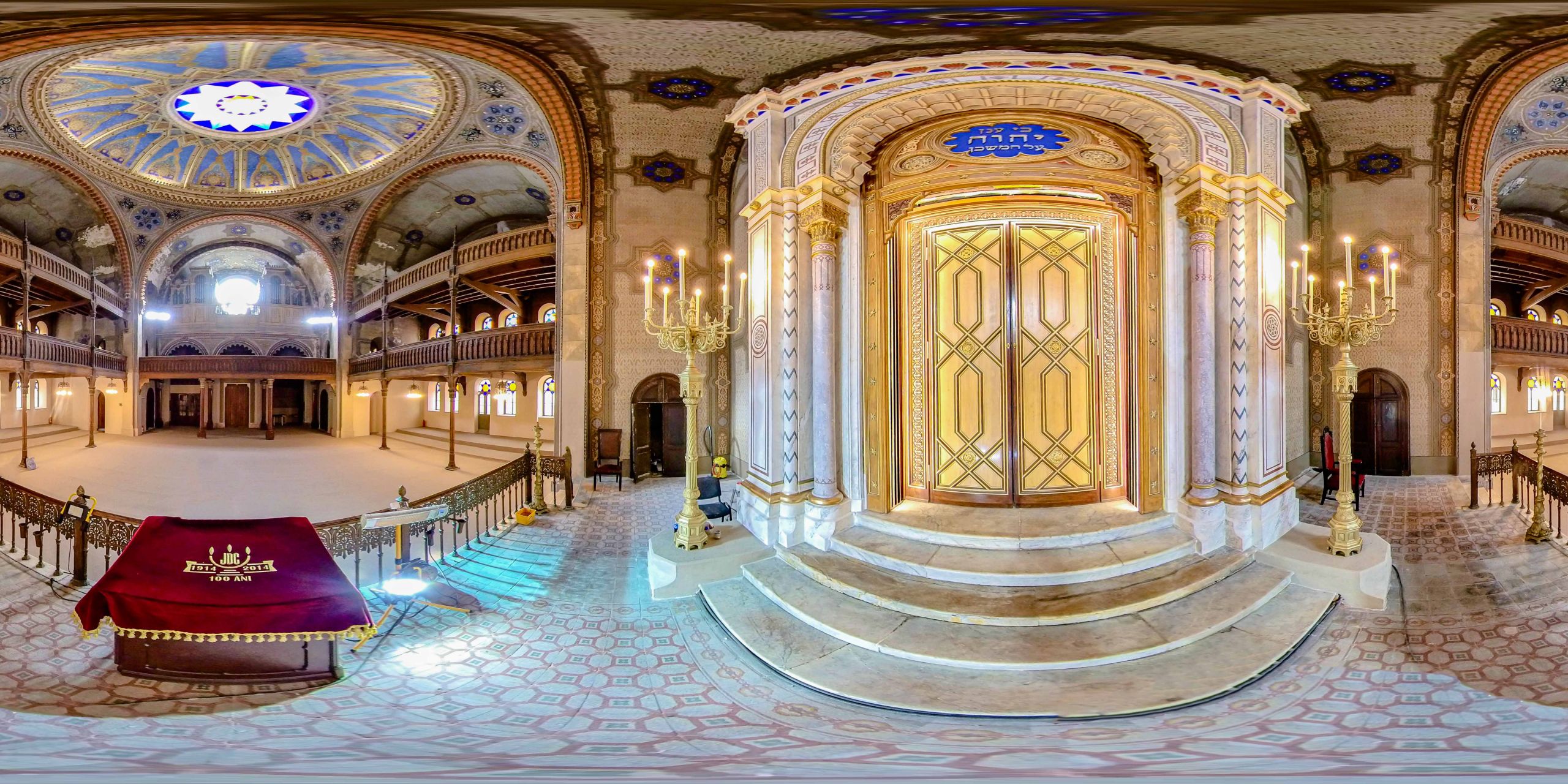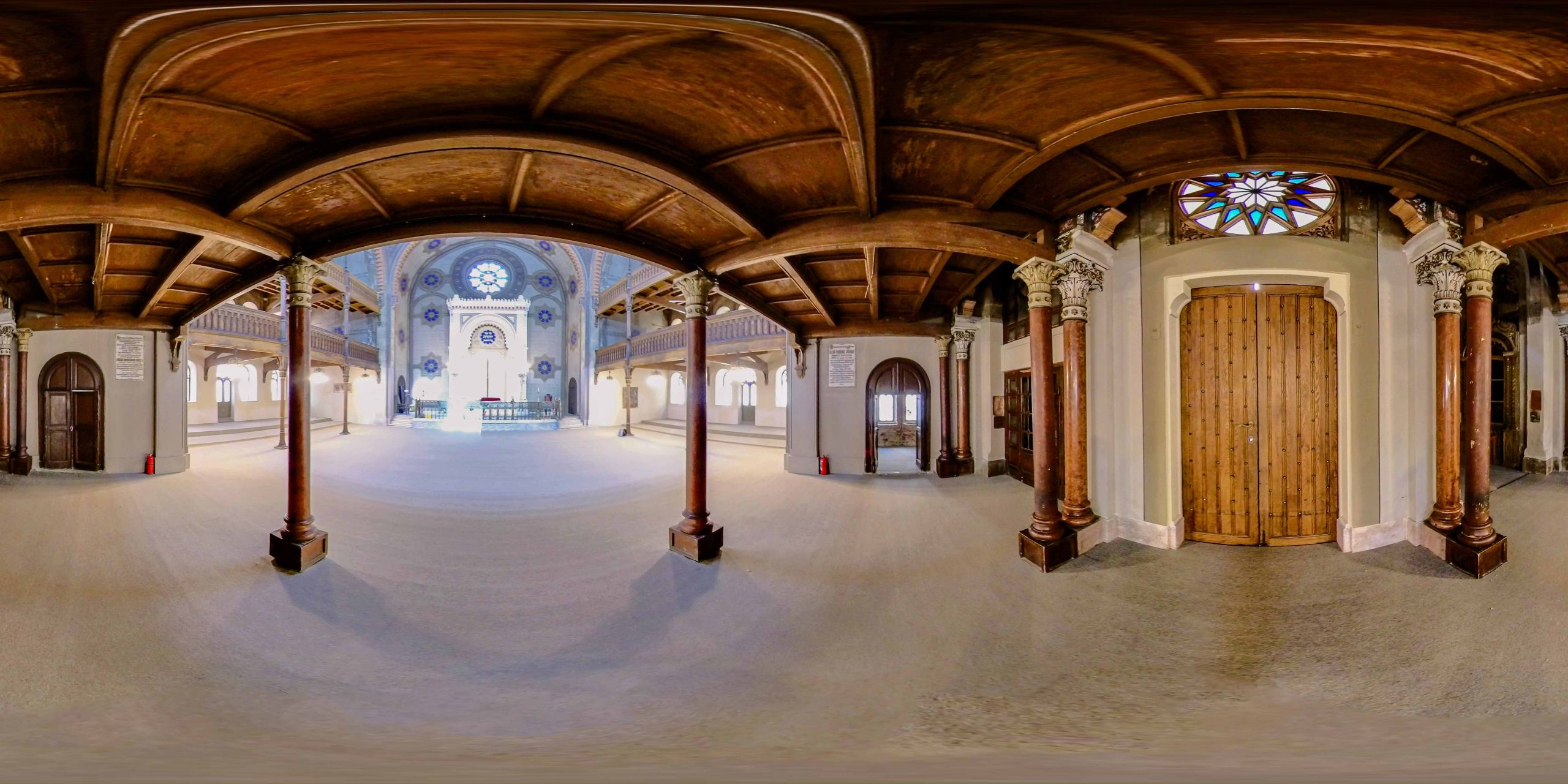The synagogue in the Cetate district is a Jewish place of worship built between 1863-1865 according to the plans of the architect Karl Schumann from Vienna.
Listen to the audio version.
The synagogue in the Cetate neighbourhood (Mărășești Street no. 6) is a Jewish place of worship built between 1863-1865 according to the plans of the architect Karl Schumann from Vienna. Made in an eclectic style, with Moorish elements, the synagogue has 744 seats (424 for men and 320 for women, in the gallery). The synagogue was inaugurated on September 19, 1865, was reopened in 1872 by King Ferenc József and served the Jewish community of neologism.
After the mass emigration of the Jews, the synagogue was closed, and the Jewish Community of Timișoara ceded in 2001 the Synagogue from the Cetate neighbourhood to the Philharmonic Society for a period of 50 years.
It was reopened in September 2005, during a concert organised by the Timișoara Philharmonic Society. Currently, the Federation of Jewish Communities in Romania is administering the synagogue again, and in May 2022 it was reopened to the public following extensive restoration work.
Bibliography: Mihai Opriș, Mihai Botescu, Historical Architecture in Timișoara, Tempus Publishing House, Timișoara, 2014
Getta Neumann, In the footsteps of Jewish Timișoara. More than a guide, Brumar Publishing House, Timișoara, 2019
Bibliography:
- Mihai Opriș, Mihai Botescu, Historical Architecture from Timișoara, Tempus Publishing House, Timișoara, 2014
- Getta Neumann, In the footsteps of Jewish Timișoara. More than a guide, Brumar Publishing House, Timișoara, 2019
Citadel Synagogue
Listen to the audio version.
Robert Șerban
I go inside the synagogue
for inspiration
I look at the ceiling the walls the organ
I take some photos
I eavesdrop on two men talking
I glance at what a woman is restoring
I’m thinking of sitting in a chair
but I don’t
no one else is sitting
I’m the only visitor
everyone else has work to do here
somehow
I also came here with a purpose
as if poetry had one
June 2022
“Rabbi Abraham Mayer also lived in two rooms on the second floor. Johann Heteri, the gravedigger, the same - two rooms, and in another two rooms, the Jewish chorister Samuel Ledidy. In the ‘big room next to the staircase’ lived the Israeli merchant Eisenstädter. And let’s not forget Mr. Heinrich Nytschky, ‘housekeeper and employed accountant’.
As is all too often the case, Peter Solderer, municipal judge and, for almost twenty years, mayor of the city - the very person to whom we owe the ‘Three Crowns’ house, wasn’t meant to live in it; nor did he even get to see it finished.” (Livius Ciocârlie, A Provincial BurgtheaterA Provincial Burgtheater, Editura Cartea Românească, 1984, p. 35-36)
Listen to the audio version.
When a Lipovean, a Mehedizian, a Suceavaan will head even further west, he will hear that Timișoara is European Capital of Culture in 2023.
It was the summer of 2022, when I had just finished a new episode of Crash Landing on You and with BlackPink in my ears, too loud, I know, I wandered off looking for a little Korean heaven, simply called, K-mart. What I did know was that it was located ''downtown''.
What I had forgotten is that Timisoara has about 14,000 historic buildings and an impressive number of sights that sometimes literally steal your eyes. Add to that the fact that every corner inside the fortress walls we could see another event taking place outdoors and it was free to enter. Was the synagogue reopening its doors? Was it newly renovated? I walked in and remembered how beautiful the mosaics were, and when I looked up at the ceiling I realized. blue is the warmest colour.
Maybe you'll make the time and go!
Marc Andreea Diana, UPT student, 2023
